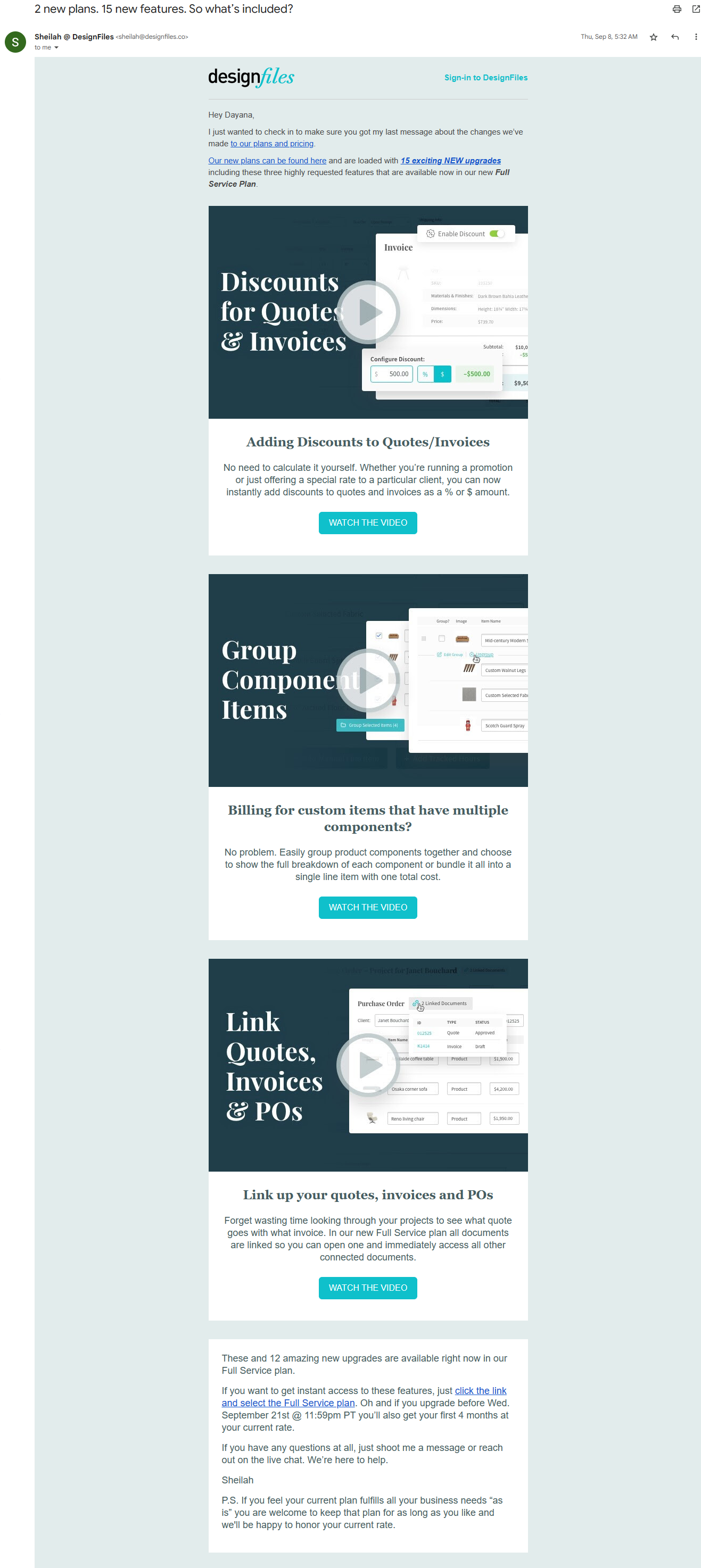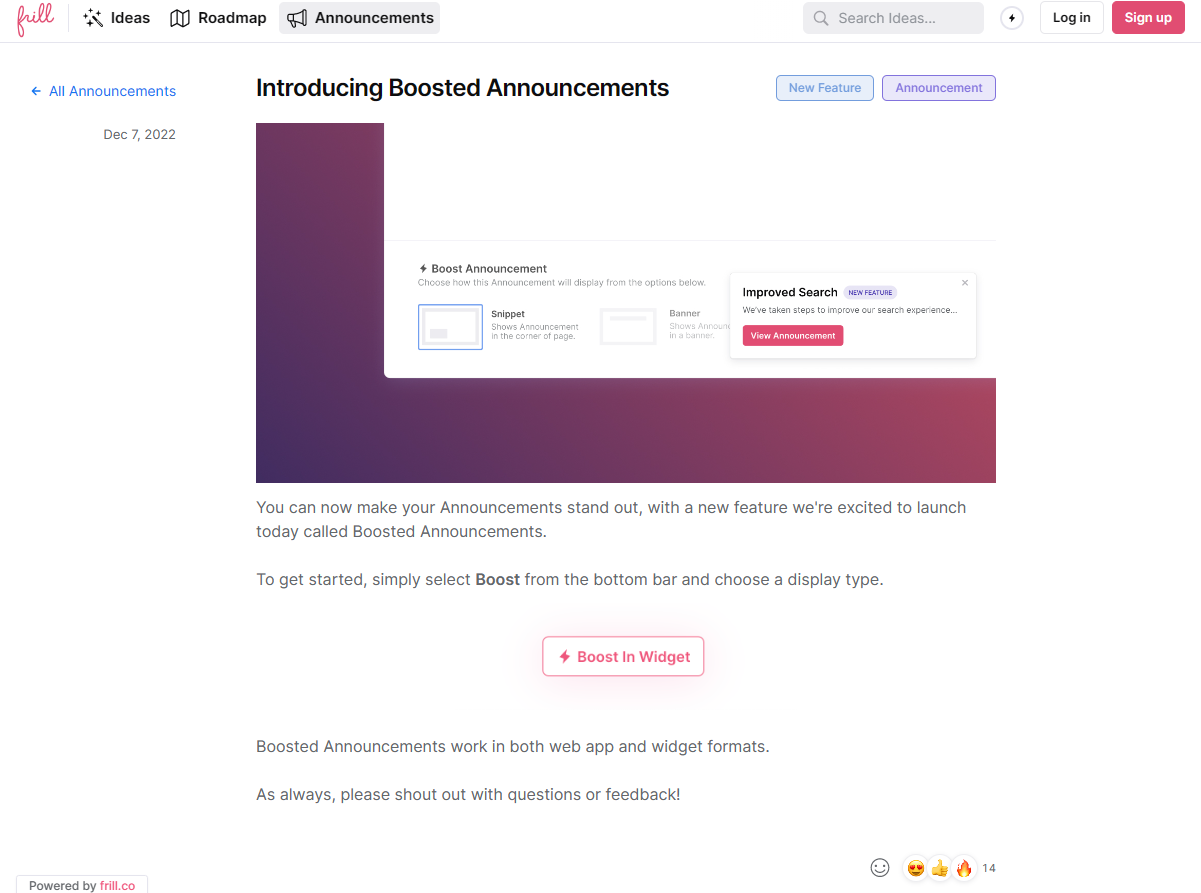Guide to Product Launch Communication Plans [With Templates]

By Dayana Mayfield
Last updated on Thu Dec 15 2022
When you're releasing a brand-new product or feature, you want to collect as much attention and engagement as you can in the early days.
After all, a successful initial launch can spark increased revenue, higher customer retention, and word-of-mouth traffic and referrals.
But there are a ton of different tasks to manage, decisions to make, and stakeholders to wrangle.
In this guide, we dive into the steps required to develop your own communication plan. Plus, we offer a few useful templates so you can speed up your processes and leave no stone unturned.
What should your product launch communication plan include?
The plan should clarify the core messages that you want to disseminate, the channels you'll deliver that messaging with, and who's collaborating to get the work done.
A great plan should cover all of these essential elements:
Target audience - List out and describe all of the audience segments that you need to communicate with. This might be all of your customers or a subset of your customers. You should also list your employees here (or different departments and teams), as you'll need to make sure that your staff understands the importance and significance of your product launch as well.
Messaging strategy - What do you want to say? List out the USPs of your product or the 3 to 5 key messages that you want to share. This will be essential for ensuring that the communications plan is cohesive, especially when leveraging business messaging platforms for customer engagement. You can later use this to brief content creators more easily.
Key channels - Also consider your top channels for each audience. For your customers, you might use your changelog or announcements page, a banner on your website, an email, and social media. But for employees, you might use your employee wiki or app, a company-wide email, and Slack.
Content deliverables - Include a list of all of the content deliverables you need. For example, one customer email, one staff email, one press release, one blog post, etc. For each deliverable, include the target audience and channel.
Communication timeline - Your plan should also include a timeline or schedule with the pre-launch, mid-launch, and post-launch activities. You can start with a rough outline of these activities using a spreadsheet or Gantt chart, and then drill down into the specifics using your project management software.
Customer support plan - What's you're plan for supporting new customers? Where can customers turn if they have additional questions about the launch? What self-serve resources are available? Make sure your plan covers all of these things so that everyone on your team knows and can help direct customers to the right places for product support.
Collaborators - List out who is collaborating on the product launch communications work. You can include the collaborators along with each channel or task to make sure everything is crystal clear.
Collaboration and review process - Include what tools and review processes you'll use to implement the plan. For example, your CEO might not sign off on every blog post the product marketing team writes, but for a new product launch, the CEO might want to handle the final approval round. Consider what special collaboration processes need to go into effect.
Product launch communication plan formats
How should you format your product launch communication plan? Below, we provide a template for each of the most popular formats.
Keep in mind that you can combine different formats.
Spreadsheets
Spreadsheets are great for quickly come up with a bird's eye view of your plan and communicating that plan with stakeholders.
This Communications Plan Template from Nextiva is a great example of managing your communications strategy in a simple, easy-to-understand spreadsheet.

On the left, there's a column for different audiences (customers, prospects, employees, media). And for each audience, you can track the deliverables, timeline, delivery methods, and channel owner.
Docs
Docs can be used to house the key messages of your plan, or ensure that you're following the same steps for each product launch (if your doc is written like a standard operating procedure).
This Communications Toolkit Template was created by the Colorado Center of Excellence for Integrated Food Safety.

It offers several useful sections including the communications objective, partners to collaborate with, target audiences, key messages, communication tactics, and ways to measure success.
Project management software
Project management tools are great for coordinating all of the various tasks required for your product launch.
Notion is one of the more popular project management tools because it offers calendars, progress boards, tables (which serve as spreadsheets), docs, and more all in one place. There are lots of launch plan templates and marketing plan templates in Notion's Template Gallery, like this Product Launch Plan Template by Rich Peterson.

The template is very thorough and can be used by companies that are launching their first ever product, meaning the business is also new.
In addition to a whole lot more, the template covers:
Customer contracts
Commercial and legal risk mitigation
Various promotion tasks
PR outreach
Pricing structure reviews
It's perfect for big product launches and new startups, but might be overkill for other use cases. If so, you can just delete the tasks you don't need.
5 steps to create your product launch communication plan
Ready to craft the perfect plan? Follow these smart steps.
Step 1. Choose your target audiences
The very first step is to choose your target audiences. For most companies, that will be your existing user base, your staff, and the media at large. You might need to have audience segments for your customers and employees. For example, if you have a B2B software product, you'll want to develop extensive messaging to pass onto your sales team. Whereas if you're selling a B2C ecommerce product, you might need to craft special messaging to explain the new product to your customer support team.
Step 2. Craft your key messages
The next step is to develop your messaging strategy.
For best results, come up with 3 to 5 key messages. Those might include the founders' story, product benefits, product features, and key transformations caused by the product.
To create content that's creative and human-sounding, run everything through an AI detector and remove paragraphs that are stuffy or robotic.
Step 3. Organize the deliverables and timeline
Next, map out all of the deliverables, collaborators, processes, and schedules. This is where you'll be working deep inside your project management tool, delegating, and setting due dates. It's important to focus on this step and give it all your attention (no multi-tasking) so you don't forget anything.
Step 4. Create your content
Now it's time to craft all of the content of your communications. Write the emails, social media captions, banner copy, press releases, blog posts, changelog entries, etc.
You might also need to work with video script writers, animators, voice over artists, or Instagram influencers to create video content. And of course, have your graphic design team create on-brand graphics that match the requirements of your communications channels.
Step 5. Launch your product, implement your plan, and retro it
It's launch time. Implement every last detail of your communications plan.
At the end of your scheduled launch, make sure to conduct a retroactive (aka retro) with your team. This is where you list out all of the things that went well, what could've been better, and what you learned. If you use OKRs, you should also review whether or not your launch met them. Analyze why or why not so you can improve your communications plan for the next product launch.
3 product launch communication examples to inspire you
Looking for more inspiration on how you can make your product stand out?
These 3 product launch comms examples are worth exploring.
1. DesignFile's 15 features launched to justify new pricing
Interior design software DesignFiles released 15 features all at once in order to convince users to sign up for a new, higher-priced plan.
This is a great example of how you can use a product or feature launch to your strategic advantage and achieve key business goals.

2. Frill's feature announcement with emoji reactions
Here at Frill, we use our own customer feedback product to announce new features and products. In our recent Boosted Announcements post, we describe a new feature that allows you to call more attention to special announcements through widget popups and banners.

And because we're using Frill, we've got emoji reactions on all of our announcements so we can track how popular they are.
These examples can teach you a few different things:
Tracking feedback on your announcements might be simpler than you think (emojis!).
You need to think outside of the box and use the channels that will get in front of your customers, such as popups, for really big launches.
It's helpful to get multiple product communication features in one place.
3. VideoAsks's NPS launch on ProductHunt
With ProductHunt, you can launch a new company, and you can launch additional products from your main company page. VideoAsk used ProductHunt to spread the word about their NPS product.

In a video-centric chatbot, companies can implement an NPS request with a friendly video. Customers can then reply with an NPS score and they can use text or video to provide additional context.
If you're launching a tech product, definitely consider launching on ProductHunt for more visibility.
For more SaaS inspo, check out our Early Stage SaaS Toolkit.
Frill lets you manage customer feedback, product announcements, and your product roadmap in one beautiful place. Learn more and start your free trial.